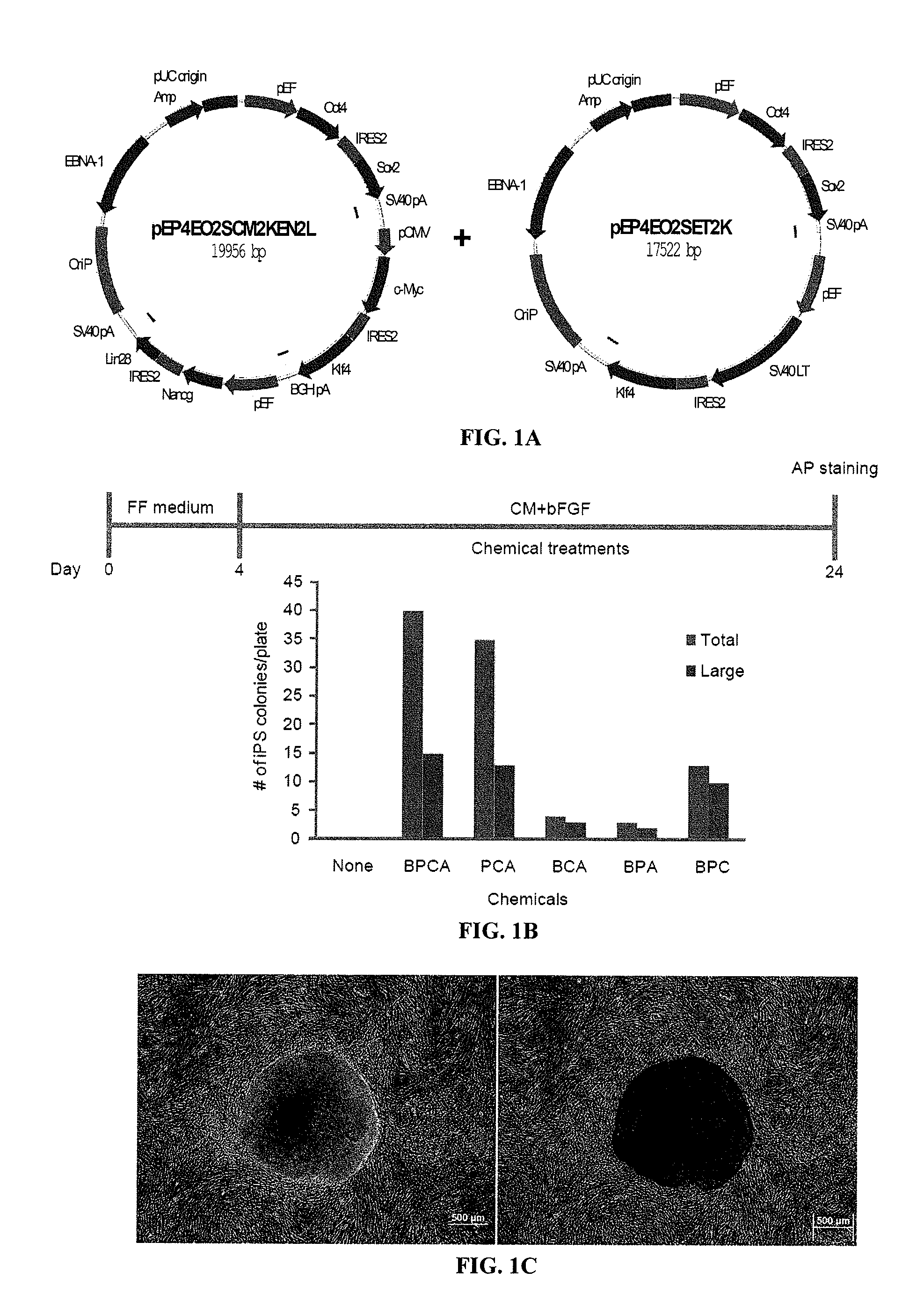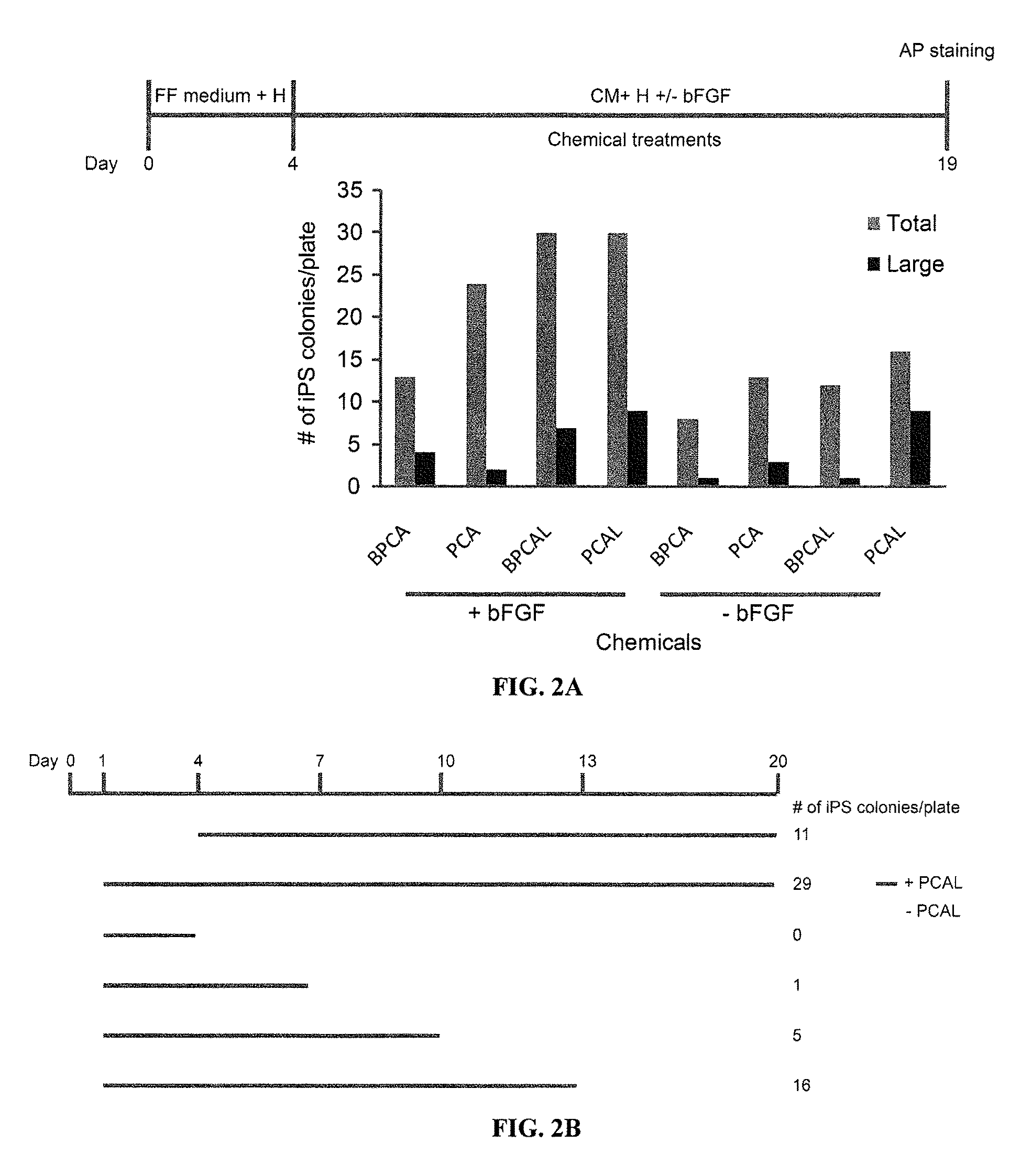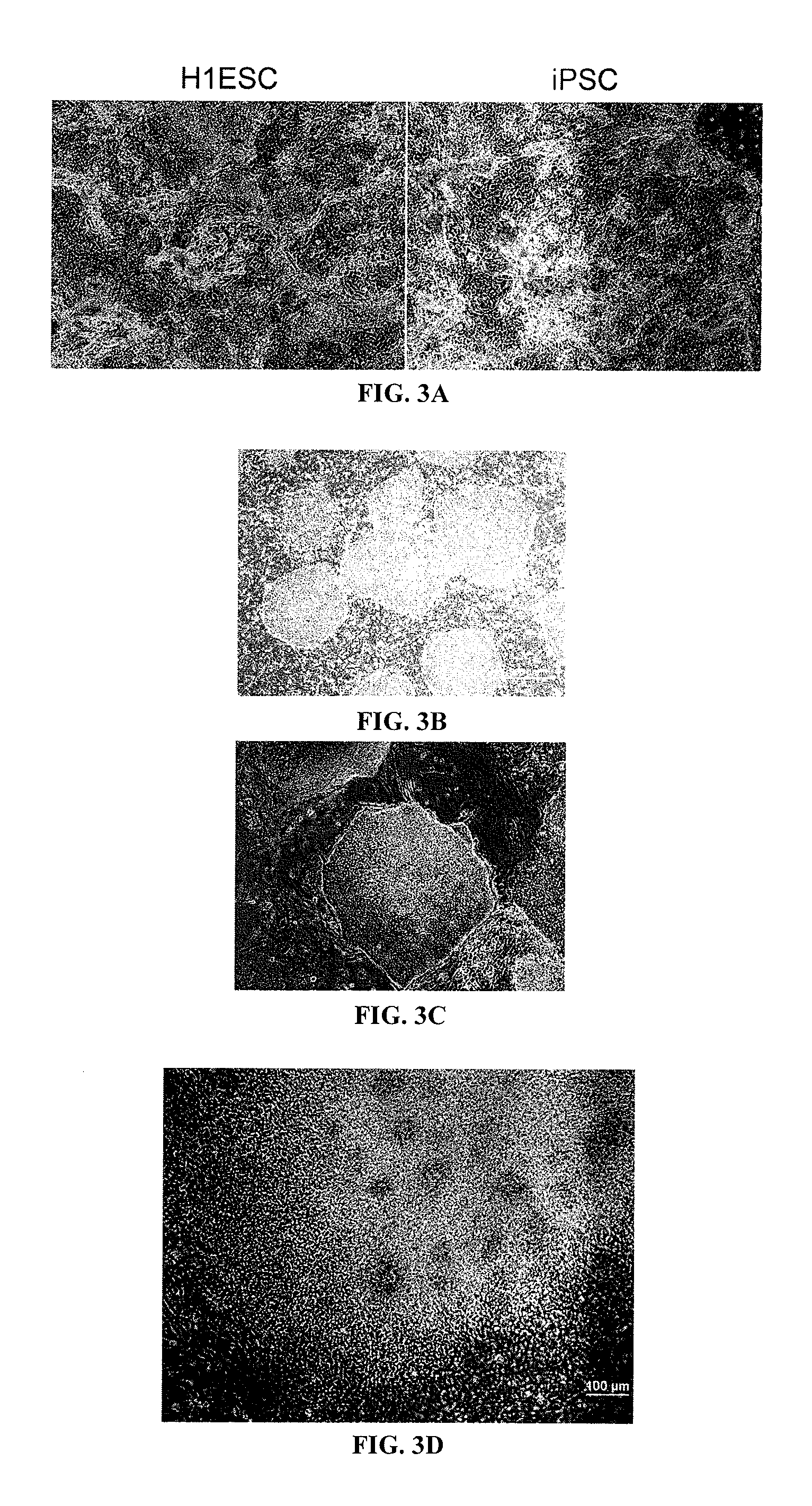Episomal reprogramming with chemicals
a technology of episomal reprogramming and chemicals, applied in the field of stem cell development, can solve the problems of high hurdles to prevent the wide use of any single technology that produces high-quality human ips cells free of exogenous genetic elements yielded very low reprogramming efficiency, and low efficiency
- Summary
- Abstract
- Description
- Claims
- Application Information
AI Technical Summary
Benefits of technology
Problems solved by technology
Method used
Image
Examples
example 1
Episomal Reprogramming of Human Foreskin Fibroblasts with Small Chemical Compounds
[0255]Through screening known chemical compounds that affect iPS cell derivation, the inventors have identified several compounds that significantly improved the episomal reprogramming efficiency of human foreskin fibroblasts. BIX01294 (B) is a selective inhibitor of G9a histone methyltransferase. In combination with BayK8644, it was initially identified as small molecules that could enable reprogramming of mouse embryonic fibroblasts transduced with Oct4 and Klf4 alone (Shi et al., 2008). PD0325901 (P) is an inhibitor of mitogen-activated protein kinase kinase (MAPK / ERK kinase or MEK). CHIR99021 (C) is the most selective inhibitor of GSK3β, while A-83-01 (A) is a potent inhibitor of the TGF-β type I receptor ALK5, the Activin / Nodal receptor ALK4, and the nodal receptor ALK7. The combination of PD0325901 and CHIR99021 (2i) has allowed the efficient derivation of mouse ES cells from recalcitrant strains...
example 2
Feeder-Free Episomal Reprogramming with Small Molecules
[0266]Human iPSCs, similar to human embryonic stem cells (ESCs), are capable of unlimited proliferation and have the potential to differentiate into all cell types of the body. These cells, thus, have applications in basic biology, disease modeling, drug development, and transplantation therapies. By expressing a defined set of reprogramming factors, iPSCs have been generated from many cell types of different species (Takahashi et al., 2007; Yu et al., 2007; Takahashi and Yamanaka, 2006; Liu et al., 2008; Esteban et al., 2009; Loh et al., 2009; Sun et al., 2009; Shimada et al., 2010). Initial methods for iPSC generation employed genome-integrating retroviral or lentiviral vectors (Yu et al., 2007; Takahashi and Yamanaka, 2006). These approaches could produce tumorigenic insertional mutations, and residual or reactivation of transgene expression during iPSC differentiation could affect lineage choice and the functionality of iPSC...
PUM
| Property | Measurement | Unit |
|---|---|---|
| time | aaaaa | aaaaa |
| time | aaaaa | aaaaa |
| time | aaaaa | aaaaa |
Abstract
Description
Claims
Application Information
 Login to View More
Login to View More - R&D
- Intellectual Property
- Life Sciences
- Materials
- Tech Scout
- Unparalleled Data Quality
- Higher Quality Content
- 60% Fewer Hallucinations
Browse by: Latest US Patents, China's latest patents, Technical Efficacy Thesaurus, Application Domain, Technology Topic, Popular Technical Reports.
© 2025 PatSnap. All rights reserved.Legal|Privacy policy|Modern Slavery Act Transparency Statement|Sitemap|About US| Contact US: help@patsnap.com



